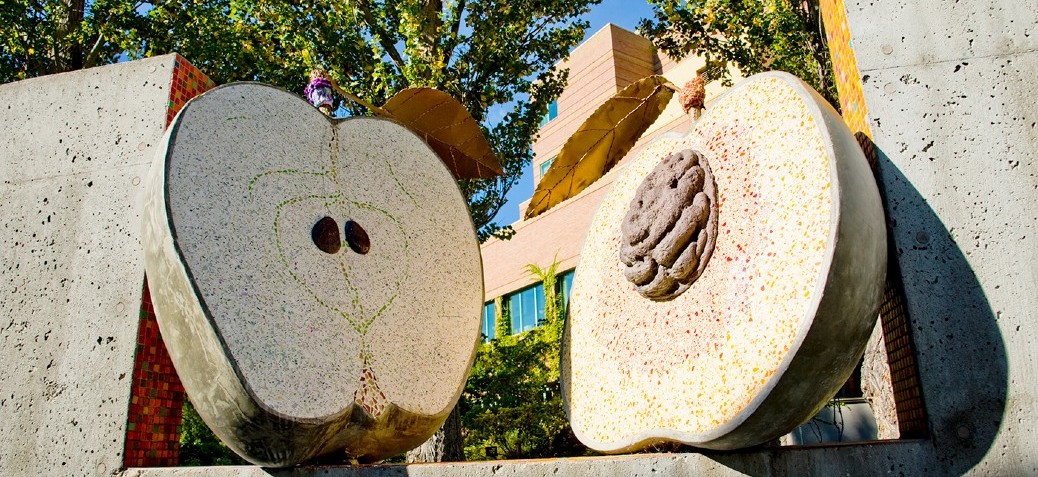Fruit Stand
The Work
This whimsical tribute to Kelowna's agricultural history consists of 7 concrete and terrazzo fruit forms on 5 benches, accompanied by mosaics of vintage fruit box labels from the 1930's and 1940's. The halved fruit pieces reveal an inner terrazzo face and all of the fruit sculptures offer botanically-accurate details in their seeds, pits and leaves.
The forms evoke the bold eroticism of fruit and celebrate its formal beauty. They also make playful reference to the oversized roadside “folk art’ found across North America. The halved fruit is also an invitation: the pieces face each other as if in conversation revealing their exposed “inner selves”, perhaps encouraging passers-by to linger and do the same.
The aperture in each of the bench backrests subtly conveys the “fruit stand” concept. It might be a concession window, a doorway, perhaps even the back of a pick-up truck, hatch down, a lone independent fruit seller on the roadside – the imagination is free to roam. At 66cm high by 76cm wide, the mosaic tiles create an intermittent “stream” of colour along the walls. All the tiles are made of imported Byzantine and Venetian glass.
The Project
The open, 2-stage competition invited an artist or team of artists to create a work of art to be installed along the pedestrian pathway at the heart of Kelowna’s Cultural District. The budget for the project was $85,000. The first stage of the competition attracted 23 candidates. After evaluation, 3 artists were shortlisted.
The second stage of the competition culminated in the choice of Glen Andersen & T.S. Thomas’s submission as the winning design. Due to personal commitments, T.S. Thomas resigned from the commission and the work was completed by Andersen. The artwork was installed in the summer of 2002 and dedicated in July 2002.
The Artist
Glen Andersen is a Vancouver-based creator of mosaics and sculpture. After studying film at Simon Fraser University in Vancouver he discovered the creation of public art to be more gratifying. He ventured into mosaics in 1995 and much of his work has been in the design and co-ordination of large community-built murals and plaza works. He has a special interest in accessible human-scale, pedestrian-friendly public art, and has given many presentations and instructional workshops on mosaic technique and design.
Viewing
The work is located on the Art Walk along the east side of the Provincial Courthouse (1355 Water Street).




